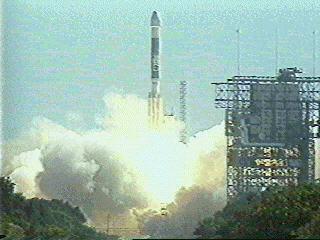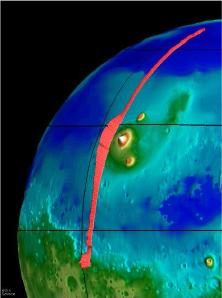Click on image for full size
Courtesy of NASA.
Instruments of the Mars Global Surveyor Mission
Mars Global Surveyor (MGS) is conducting mapping operations at Mars more than 30 years after America's first reconnaissance missions reached the mysterious red planet. Here are some of the instruments carried onboard. Many of these instruments were inherited from the Mars Observer mission. These instruments are designed to study the weather and surface of Mars:
- A camera to produce daily weather images of Mars similar to weather photographs of the Earth shown on the nightly news.
- A laser altimeter to bounce beams of light off of the surface to measure the heights of mountains and depths of valleys.
- A thermal emission spectrometer to scan for heat emitted from Mars to study the atmosphere and to map the mineral composition of the surface. Surface temperature maps are being created daily.
- A magnetometer to study the magnetic properties of Mars to gain insight into the interior of the planet. An important new result from the mission is the definite confirmation of the presence of a Martian magnetic field.
An analysis of radio signals sent to Earth from Surveyor will reveal the precise shape of the planet and structure of the atmosphere. New findings about the shape of the atmosphere already had an effect on determining the aero-braking process.










